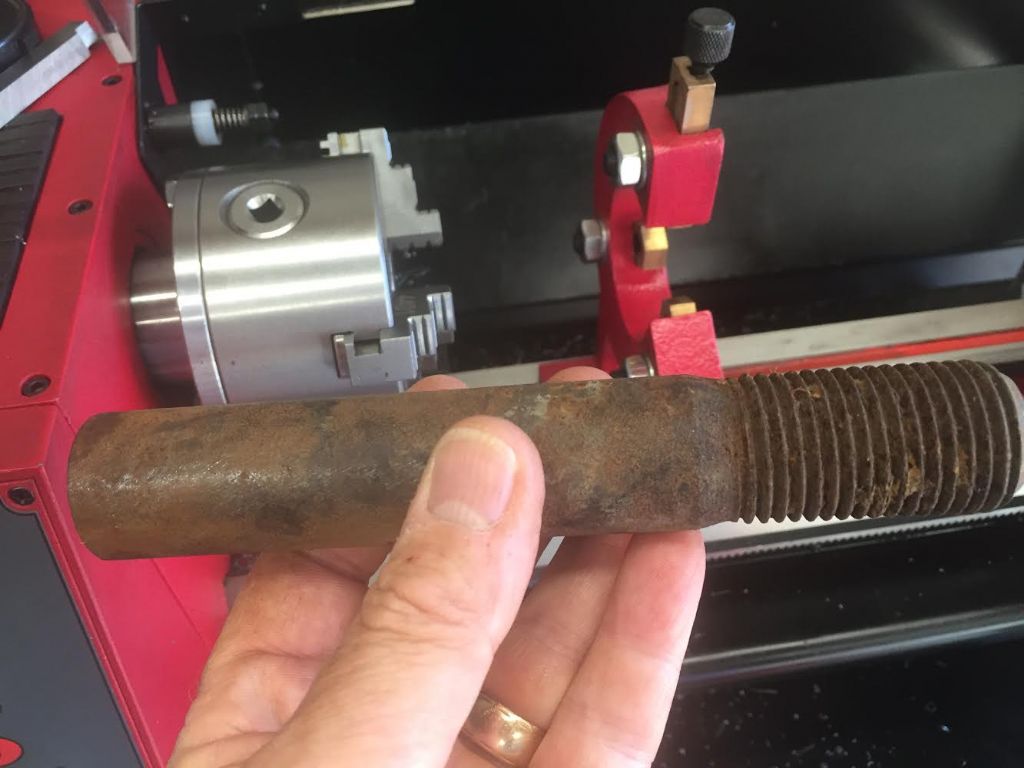Take care when machining long rods that are only gripped by the length of the chuck jaws. You are taking a walk on the wild side!
The danger is that long work can cam out of the chuck when you try and cut it. Then the other end flails about with a good chance of it jamming between the chuck and something solid like the saddle or tool-post. Bang! If it jams there's a good chance of serious damage to the lathe; dented ways, twisted tool-post, stripped gears, crunched tool, strained bearings, and a dead motor / electronics are all possible. If the rod doesn't jam, it might damage the operator instead.
Rods longer than 4 or 5 times their diameter are surprisingly bendy and they also act as a lever. A typical cam out occurs when the tool pushes the spinning rod away rather than cutting metal. Sooner or later the tool digs in and exerts enough force to crowbar the rod out of the chuck's grip. The cure is to make certain the work is supported throughout. It's not unusual to see long work supported by a fixed steady and by a travelling steady as well as the chuck and tail-stock centre.
I'd approach the job as described by Rod: drill a hole and use a tail-stock centre. Well worth doing for the experience, but take reasonable care.
Dave
Nige.








